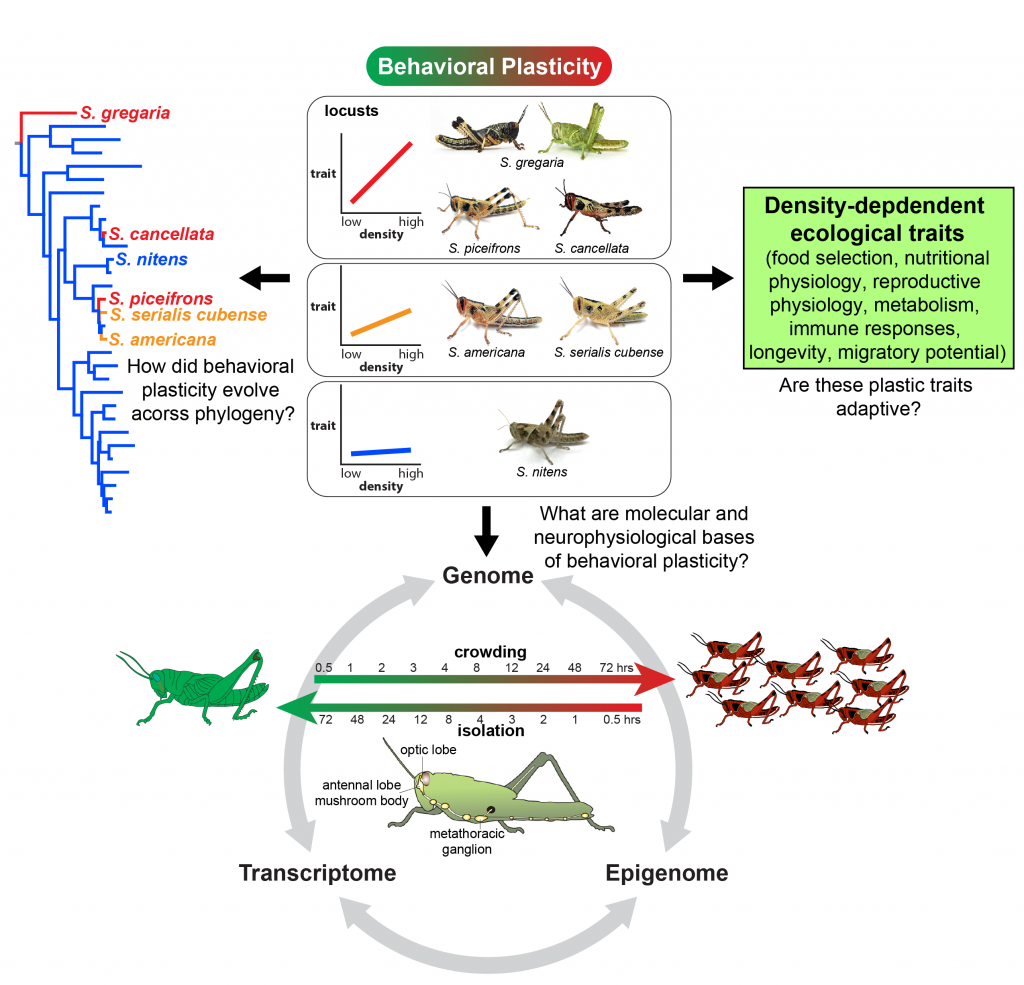Research Objective
The overall research goal of the BPRI is to integrate (i) suborganismal processes of locust phase polyphenism, which will be investigated from genomic, epigenomic, transcriptomic, and neurophysiological perspectives using powerful genome-editing tools, with (ii) organismal biology and ecology, which will be investigated using manipulative lab-based and field-based experiments, (iii) in a phylogenetic framework.

Schistocerca as a study system
To understand phenotypic plasticity in a comparative framework, the BPRI has taken a clade-based approach and focuses on the grasshopper genus Schistocerca Stål (Orthoptera: Acrididae). This genus represents an ideal comparative system because it contains both swarming locusts and non-swarming sedentary grasshoppers. The desert locust (S. gregaria) occupies the basal position and is sister to the rest of the genus. This implies that density-dependent phenotypic plasticity is an ancestral condition. Importantly, the locust species in the genus do not form a monophyletic group, which suggests that locust phase polyphenism has been lost and gained multiple times. Furthermore, non-swarming sedentary grasshopper species that are phylogenetically close to the locust species have the ability to exhibit varying degrees of density-dependent phenotypic plasticity, suggesting that some aspects of density-dependent plasticity are phylogenetically conserved. The BPRI focuses on six species that vary in their degrees of density-dependent phenotypic plasticity. Three of these species are locust species with full-blown locust phase polyphenism: (i) S. gregaria (desert locust), (ii) S. piceifrons (Central American locust), and (iii) S. cancellata (South American locust). Two are non-swarming species phylogenetically close to S. piceifrons that show plastic transformations reminiscent of the locusts : (iv) S. americana (American bird grasshopper) and (v) S. serialis cubense (Cuban bird grasshopper). And finally, one is a sedentary grasshopper with negligible expression of plasticity: (vi) S. nitens (gray bird grasshopper). These six species are all available as laboratory colonies at Texas A&M University.
BPRI Research Areas
The BPRI aims to integrate the following research areas to study locust phase polyphenism across various disciplines. Below are some highlights of our research in the form of 3-minute lightning talk, recently presented at the BPRI Bootcamp (May 20-21, 2022).